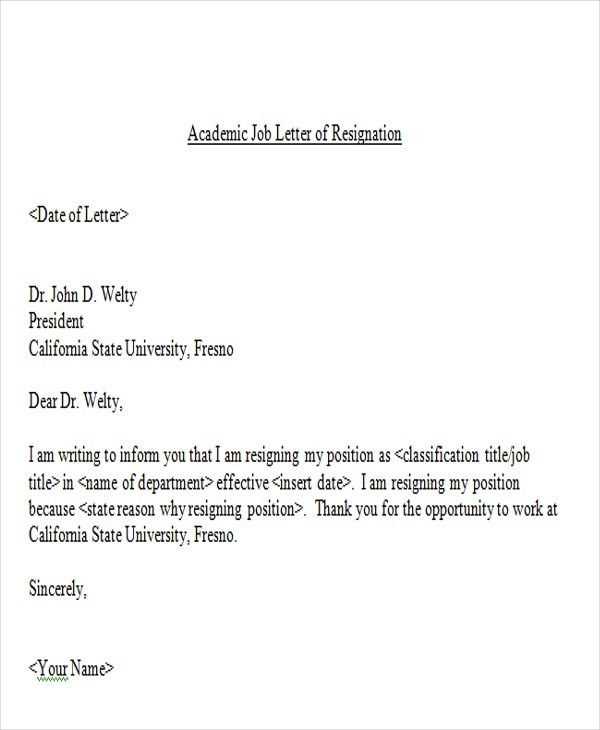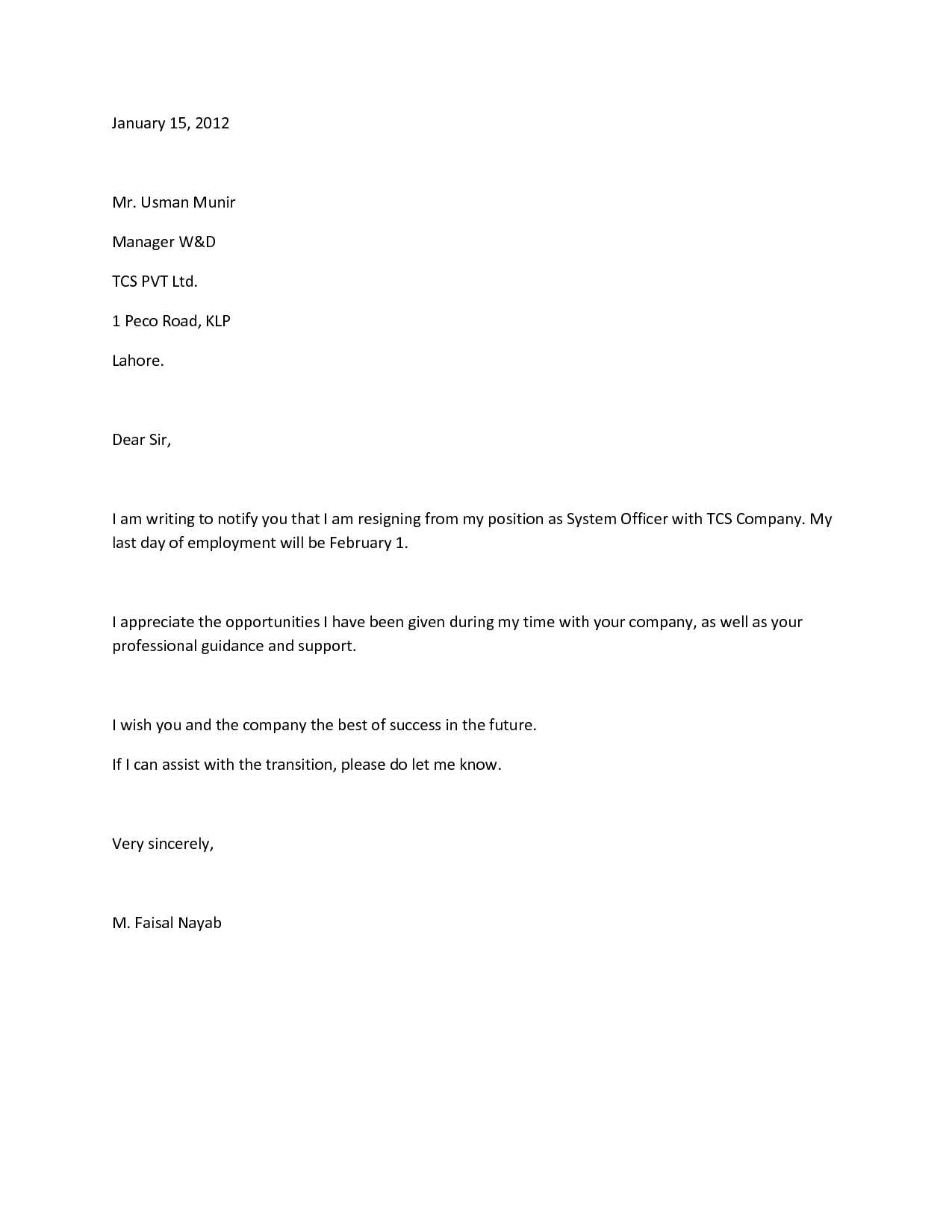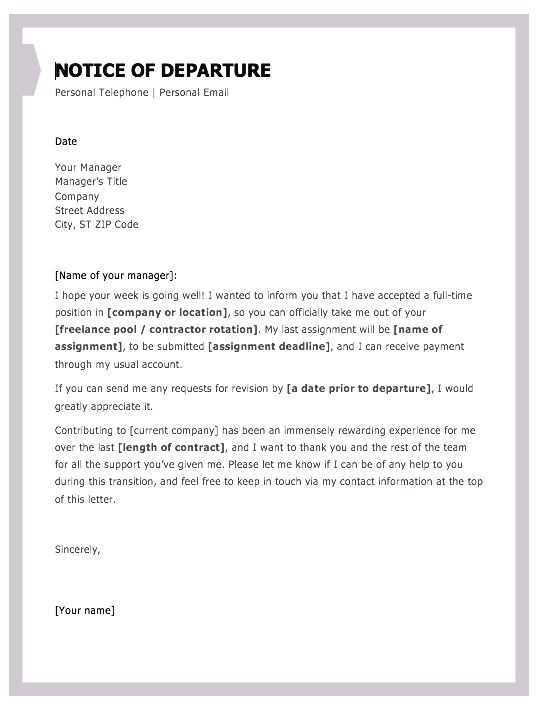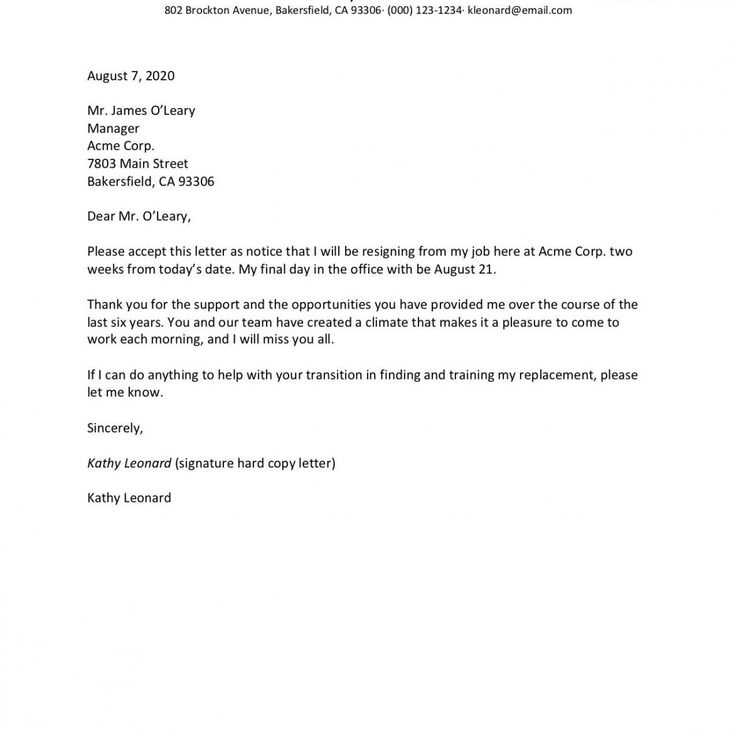How to write resignation letter template

Keep your resignation letter clear and concise. Begin by addressing your employer or manager directly, using a polite and respectful tone. Express your decision to resign and provide your intended last working day. This shows professionalism and helps set expectations for the transition.
Next, mention briefly the reasons for your decision, if appropriate. Avoid excessive details, and focus on maintaining a positive relationship. If you’re leaving due to personal reasons or to pursue a new opportunity, keep it simple and professional.
Conclude with gratitude for the opportunities and experiences you gained during your time with the company. Offer to assist with the transition process and provide your contact information for any follow-up, reinforcing your willingness to stay helpful during the handover.
How to Write Resignation Letter Template

Start with a clear and concise statement of your intent to resign. Include your position and the company name right away to avoid ambiguity.
State Your Resignation Clearly
- Begin by stating that you are resigning from your position.
- Provide the date you plan to leave, which is usually two weeks from the date of the letter.
- Keep this section simple and straightforward, without unnecessary details.
Express Gratitude and Acknowledge Your Experience
- Briefly thank your employer for the opportunity and the experiences you gained.
- Even if the reason for leaving is negative, keep this section polite and professional.
- Acknowledge any positive aspects of your time with the company to leave on good terms.
Offer Assistance During the Transition
- Offer to help with the transition process, such as training a replacement or documenting your tasks.
- Be specific about how you can assist, but avoid overcommitting.
End on a Professional Note
- Close the letter with a polite sentence wishing the company continued success.
- Sign off with your name and contact information for any follow-up needed.
Choose the Right Format for Your Resignation Letter
Pick a clear and straightforward structure for your resignation letter. A professional format shows respect and leaves a positive impression. Stick to a formal letter format, starting with a header that includes your contact details and the date. After that, address your supervisor or HR department using their formal title.
Open with a brief and direct statement of your intention to resign. Specify your last working day, which should follow the company’s notice period policy. Keep the tone polite but concise. Avoid lengthy explanations about your decision, and instead focus on the transition process.
In the body, express gratitude for the opportunity and mention any positive experiences or skills you’ve gained. If you need to share feedback, do so in a constructive way. End by offering help during the transition, like training a replacement or finishing pending projects.
Close the letter with a professional sign-off, such as “Sincerely” or “Best regards,” followed by your full name. Double-check that your letter is free from errors to maintain professionalism. This format ensures clarity and leaves the door open for future communication.
Start with a Professional Opening
A strong and respectful opening sets the tone for your resignation letter. Begin by clearly stating your intention to resign, without any ambiguity. A direct approach shows professionalism and clarity.
Be Clear and Direct

- Avoid unnecessary explanations or justifications for your decision.
- State your resignation in a straightforward manner: “I am writing to formally resign from my position as [Your Job Title] at [Company Name].”
Maintain a Polite and Professional Tone

- Even if you’re leaving due to negative reasons, keep the tone courteous and appreciative.
- Acknowledge the opportunity you had, such as: “I am grateful for the experiences and opportunities provided during my time at [Company Name].”
State Your Reason for Leaving Clearly

Be straightforward and honest about why you are leaving. Avoid vague statements or over-explaining your situation. Whether it’s for personal reasons, a new opportunity, or a career change, clearly state your decision. If you’re leaving for another job, you can mention the new position without going into too much detail about the company. If you’re leaving for personal reasons, it’s okay to keep that brief as well. The goal is to be clear but professional.
Avoid sounding negative about your current role or employer. Focus on your decision rather than what you are leaving behind. For example, instead of saying “I don’t like working here,” try framing it as, “I’ve decided to pursue a new opportunity that aligns more with my career goals.” This keeps the tone positive and forward-looking, even while stating your reason for leaving.
Finally, if your reason is sensitive, like personal health or family matters, you don’t need to go into specifics. A simple “for personal reasons” is enough. Keep it respectful and professional, regardless of the situation.
Express Gratitude for the Opportunity
Thank your employer for the chance to work with the team and contribute to the organization. Be specific about the skills or experiences you’ve gained. Acknowledge the support and guidance you’ve received, and mention any particular projects or tasks that have been meaningful to you. This shows your appreciation and leaves a positive impression.
For example, you could say: “I am grateful for the opportunity to work on [specific project] and for the knowledge I’ve gained during my time here. I’ve learned a great deal from my colleagues and have enjoyed collaborating on [tasks or initiatives].”
End this section with a positive tone that reflects your sincere appreciation. A short note expressing how the role has helped shape your career can make the message more heartfelt and genuine.
Offer Assistance with the Transition Process
Provide clear support during the handover. Outline your willingness to train a successor or assist with any outstanding projects. Be specific about the tasks you can help with to make the transition smoother for your team and organization.
Offer Training or Documentation
Prepare training materials or offer to guide your replacement through key responsibilities. If documentation for processes or workflows is missing, this is a good time to create or update it.
Assist with Client or Team Handover
Ensure that ongoing projects or client relationships are properly handed over. Schedule meetings or provide a written summary of what needs attention to avoid disruption after your departure.
| Assistance Type | Details |
|---|---|
| Training | Provide a detailed plan for onboarding a new employee or guide the team on project tasks. |
| Documentation | Write up essential information that ensures a smooth continuation of your duties. |
| Client Transition | Arrange meetings with clients to introduce the new point of contact or ensure continuity. |
Close Your Letter with a Positive Note
Conclude your resignation letter with gratitude and a forward-looking tone. Thank your employer for the opportunities provided and express appreciation for the experiences gained. Highlight your positive feelings about working with the team and the company. Offering to assist with the transition process shows professionalism and a willingness to leave on good terms.
Offer Assistance with Transition
Before closing, make it clear that you are open to helping with the transition. Mention your willingness to train a successor or assist in handing over your responsibilities. This demonstrates commitment to the company’s ongoing success and leaves a lasting positive impression.
Leave the Door Open for Future Opportunities
End the letter by expressing your hope to stay in touch. Let your employer know that you look forward to potential future collaborations or professional relationships. This can help maintain a positive connection even after your departure.